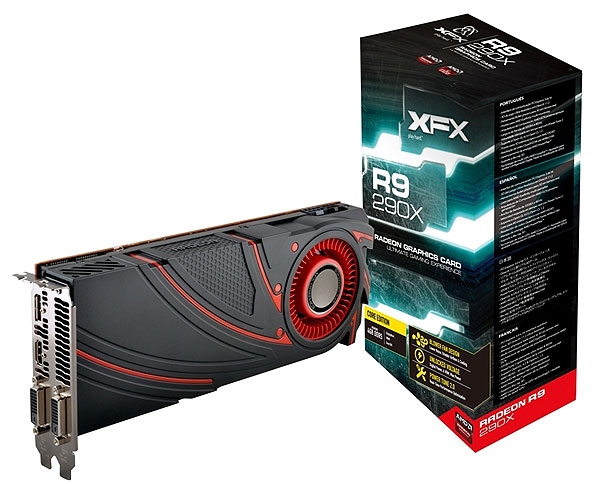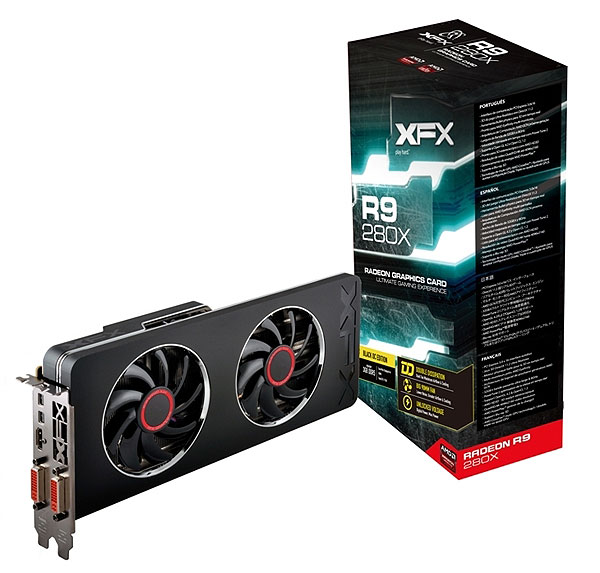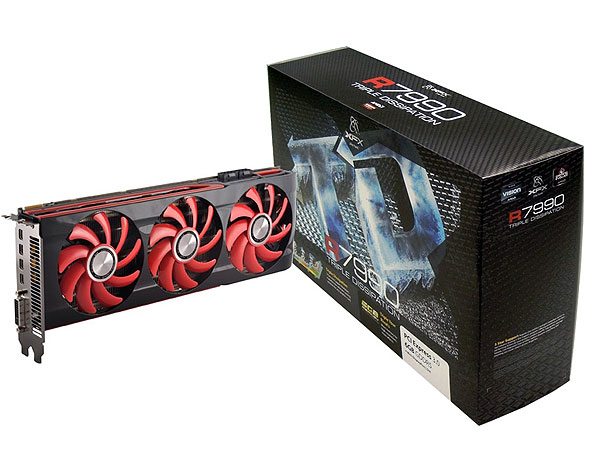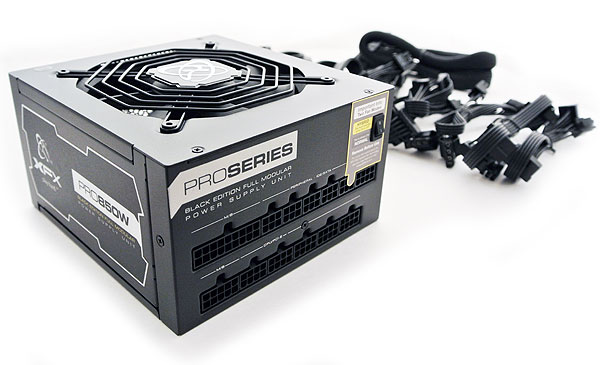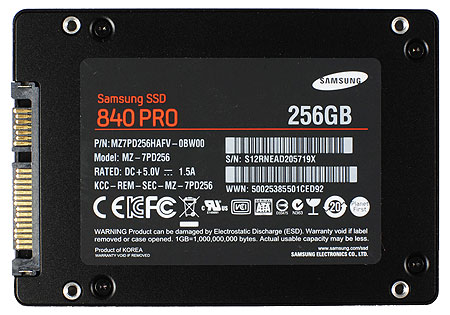Call Of Duty: Ghosts Graphics Performance: 17 Cards, Tested
It's already a commercial blockbuster. But does Call of Duty: Ghosts improve the first-person shooter genre, or simply rehash it? We look at this series' newest installment and test to see what kind of hardware you'll need for smooth play on the PC.
Test Hardware: Graphics Cards And Platform
As always, we strive to represent game performance across a wide range of graphics hardware. We include cards ranging from the low-end Radeon HD 6450 and GeForce GT 210 to the powerful Radeon R9 290X, HD 7990, GeForce GTX Titan, and 690.
We had a couple of openings in our hardware line-up, but graphics card manufacturer XFX came to the rescue and supplied a few samples for this review:
XFX Radeon R9 290X Core Edition
Currently, all Radeon R9 290X cards bear AMD's reference thermal solution, but this is the board XFX is branding. Armed with 4 GB of 1250 MHz GDDR5 memory on a 512-bit bus, it also features 2560 shaders, 160 texture units, 64 ROPs, and greatly improved geometry processing capabilities compared to its predecessor.
XFX Radeon R9 280X Double Edition
This Radeon R9 280X is equipped with XFX's Double Dissipation cooling solution, known for quiet and efficient operation thanks to dual 100 mm fans. It sports 3 GB of GDDR5 on a 384-bit bus and AMD's Tahiti GPU. While it's not as fast as the R9 290 family, it's still as capable as the Radeon HD 7970 we know so well.
XFX Radeon HD 7990 Core Edition
Get Tom's Hardware's best news and in-depth reviews, straight to your inbox.
It might be considered a previous-generation card but, the Radeon HD 7990 remains AMD's fastest dual-slot graphics card. Essentially two Radeon HD 7970s on a single PCB, this beast's dual Tahiti GPU setup adds up to 4096 shaders, 256 texture units, and 64 ROPs.
We all know that graphics cards like the Radeon HD 7990 require a substantial amount of power, so XFX sent along its PRO850W 80 PLUS Bronze-certified power supply. This modular PSU employs a single +12 V rail rated for 70 A. XFX claims that this unit provides 850 W of continuous power (not peak) at 50 degrees Celsius (notably higher than the inside of most enclosures).
We've almost exclusively eliminated mechanical disks in the lab, preferring solid-state storage for eliminating I/O-related bottlenecks. Samsung sent all of our labs 256 GB 840 Pros, so we standardize on these exceptional SSDs.
| Header Cell - Column 0 | Header Cell - Column 1 |
|---|---|
| CPU | Intel Core i5-2550K (Sandy Bridge), Overclocked to 4.2 GHz @ 1.3 V |
| Motherboard | Asus P8Z77-V LX, LGA 1155, Chipset: Intel Z77M |
| Networking | On-Board Gigabit LAN controller |
| Memory | AMD Gamer Series Memory, 2 x 4 GB, 1866 MT/s, CL 9-9-9-24-1T |
| Graphics | GeForce 210 1 GB DDR3GeForce GT 630 512 MB GDDR5GeForce GTX 650 Ti 1 GB GDDR5GeForce GTX 660 2 GB GDDR5GeForce GTX 670 2 GB GDDR5GeForce GTX 770 2 GB GDDR5GeForce GTX Titan 6 GB GDDR5GeForce GTX 690 4 GB GDDR5Radeon HD 6450 512 MB GDDR5Radeon HD 6670 512 MB DDR3Radeon HD 7770 1 GB GDDR5Radeon R7 260X 1 GB GDDR5Radeon R9 270 2 GB GDDR5Radeon HD 7950 Boost 3 GB GDDR5Radeon R9 280X 3 GB GDDR5Radeon R9 290X 4 GB GDDR5Radeon HD 7990 6 GB GDDR5 |
| Hard Drive | Samsung 840 Pro, 256 GB SSD, SATA 6Gb/s |
| Power | XFX PRO850W, ATX12V, EPS12V |
| Software and Drivers | |
| Operating System | Microsoft Windows 8 Pro x64 |
| DirectX | DirectX 11 |
| Graphics Drivers | AMD Catalyst 13.11 Beta 9.2, Nvidia GeForce 331.65 WHQL |
| Benchmarks | |
|---|---|
| Call Of Duty: Ghosts | Custom THG Benchmark, 60-second Fraps runCampaign: Homecoming |
Current page: Test Hardware: Graphics Cards And Platform
Prev Page Game Engine, Image Quality, And Settings Next Page Results: Low Quality, 1280x720Don Woligroski was a former senior hardware editor for Tom's Hardware. He has covered a wide range of PC hardware topics, including CPUs, GPUs, system building, and emerging technologies.
-
jimmysmitty ReplyI think it's safe to say that Call of Duty defined, and then refined, the console-based first-person shooter experience
It is funny to see this as CoD1 and CoD2 were originally PC games. CoD2 was the first to be ported to the 360 but CoD3 was the first multi-console one of the series, with no release on the PC.
I loved 1 and 2 and 4 was pretty good but now CoD is just the same thing every year. It's just a cash cow currently with no innovation while 1 & 2 were very innovative (CoD1 was the first to have real recorded sounds for every gun used in the game).
I haven't done a CoD since 2. It's too bad as it could have been a great series if it didn't become console and money centric.
Also, on page 9 the chart for the FPS says Battlefield 4...... -
lunyone If you have a PhII x4 965 BE, you can just OC it to get a bit more FPS if you like, so there is that option. Obviously you want more CPU, but not all of us have the $ to do so.Reply -
Cons29 my last cod was mw2 which i stopped playing due to lack of dedicated server. The last i enjoyed was cod4.Reply
bf is much better (personal opinion), 64 players on a huge map with vehicles and desctructions, better than cod -
Frank Zigfreed Loving these game graphics performance reviews!!! keep them coming tomshardware!!Reply
B -
animeman59 Been playing this game on PC ever since it's release, and I gotta say, this is probably one of the worst performing games that I've ever seen. I'm running an FX-8350, a GTX 780, and 32GB of RAM, and this game will still dip below 45fps. I don't care what anyone says, but CoD and IW6 should be running with no issues on a rig like that. It's a little suspicious when I can get 60fps consistent on a game like Battlefield 4 with max settings, but CoD:Ghosts stutters like Porky Pig. Even Metro: Last Light runs better than CoD:Ghosts!Reply
This game is horribly optimized and buggy. People on Steam forums have been complaining about game-breaking bugs from day one, and there's still issues that haven't been answered for, yet. Like the one in Squad Mode where you can't use any of your squad members in a game, except for the first one. Or the earlier bug where people couldn't even create their first soldier, because they didn't have 3 squad points to unlock it, hence locking them out of multiplayer.
Skip out on this game. Infinity Ward obviously doesn't care about the PC market, and their horrible release just further solidifies that fact. Spend your money on a MP shooter that doesn't insult it's audience. -
lunyone Reply12095017 said:Been playing this game on PC ever since it's release, and I gotta say, this is probably one of the worst performing games that I've ever seen. I'm running an FX-8350, a GTX 780, and 32GB of RAM, and this game will still dip below 45fps. I don't care what anyone says, but CoD and IW6 should be running with no issues on a rig like that. It's a little suspicious when I can get 60fps consistent on a game like Battlefield 4 with max settings, but CoD:Ghosts stutters like Porky Pig. Even Metro: Last Light runs better than CoD:Ghosts!
This game is horribly optimized and buggy. People on Steam forums have been complaining about game-breaking bugs from day one, and there's still issues that haven't been answered for, yet. Like the one in Squad Mode where you can't use any of your squad members in a game, except for the first one. Or the earlier bug where people couldn't even create their first soldier, because they didn't have 3 squad points to unlock it, hence locking them out of multiplayer.
Skip out on this game. Infinity Ward obviously doesn't care about the PC market, and their horrible release just further solidifies that fact. Spend your money on a MP shooter that doesn't insult it's audience.
Quake or Unreal Tournament, anyone? -
oxiide Reply12095151 said:LOL @ NVidia frame variance
I get that you're trying to phrase that as an AMD fanboy taking a shot at Nvidia, but frame variance is all over the place in this review. There's AMD hardware all over those charts too, not just clustered at the low end.
These frame variance numbers often aren't even logical—the HD 7990, with lower frame variance than a single HD 7950? A GTX 690 doing better than a single 670? I think its clear that the quality of Infinity Ward's PC port is a factor here, and maybe that's more important than pouncing on Nvidia's mistakes. -
bemused_fred Reply12095017 said:. I'm running an FX-8350, a GTX 780, and 32GB of RAM,
A mediocre-CPU with a top end GPU and too much RAM? I FOUND YOUR PROBLEM!
